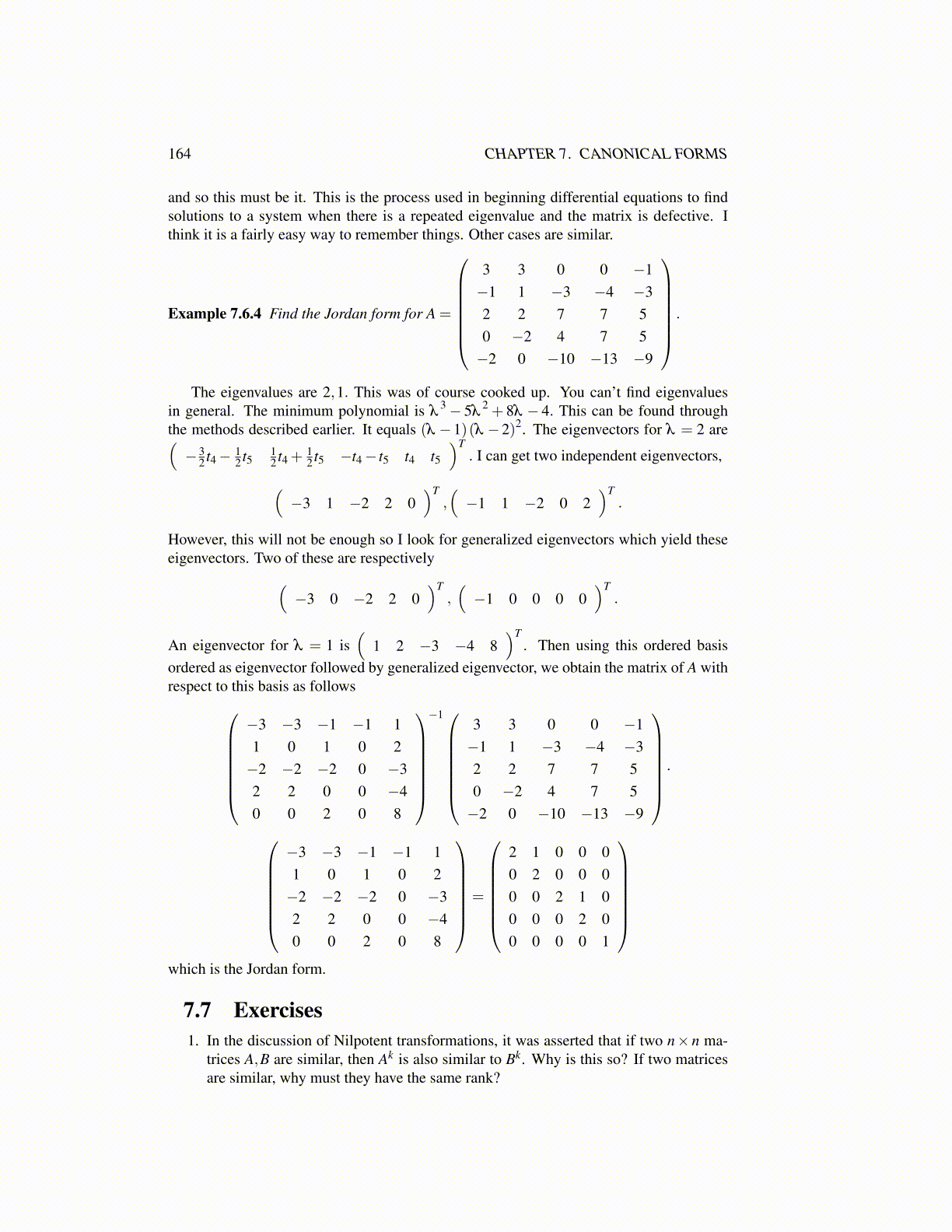
164 CHAPTER 7. CANONICAL FORMS
and so this must be it. This is the process used in beginning differential equations to findsolutions to a system when there is a repeated eigenvalue and the matrix is defective. Ithink it is a fairly easy way to remember things. Other cases are similar.
Example 7.6.4 Find the Jordan form for A =
3 3 0 0 −1−1 1 −3 −4 −32 2 7 7 50 −2 4 7 5−2 0 −10 −13 −9
.
The eigenvalues are 2,1. This was of course cooked up. You can’t find eigenvaluesin general. The minimum polynomial is λ
3− 5λ2 + 8λ − 4. This can be found through
the methods described earlier. It equals (λ −1)(λ −2)2. The eigenvectors for λ = 2 are(− 3
2 t4− 12 t5 1
2 t4 + 12 t5 −t4− t5 t4 t5
)T. I can get two independent eigenvectors,
(−3 1 −2 2 0
)T,(−1 1 −2 0 2
)T.
However, this will not be enough so I look for generalized eigenvectors which yield theseeigenvectors. Two of these are respectively(
−3 0 −2 2 0)T
,(−1 0 0 0 0
)T.
An eigenvector for λ = 1 is(
1 2 −3 −4 8)T
. Then using this ordered basisordered as eigenvector followed by generalized eigenvector, we obtain the matrix of A withrespect to this basis as follows
−3 −3 −1 −1 11 0 1 0 2−2 −2 −2 0 −32 2 0 0 −40 0 2 0 8
−13 3 0 0 −1−1 1 −3 −4 −32 2 7 7 50 −2 4 7 5−2 0 −10 −13 −9
·−3 −3 −1 −1 11 0 1 0 2−2 −2 −2 0 −32 2 0 0 −40 0 2 0 8
=
2 1 0 0 00 2 0 0 00 0 2 1 00 0 0 2 00 0 0 0 1
which is the Jordan form.
7.7 Exercises1. In the discussion of Nilpotent transformations, it was asserted that if two n× n ma-
trices A,B are similar, then Ak is also similar to Bk. Why is this so? If two matricesare similar, why must they have the same rank?